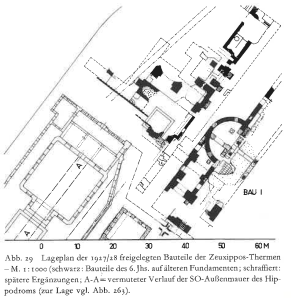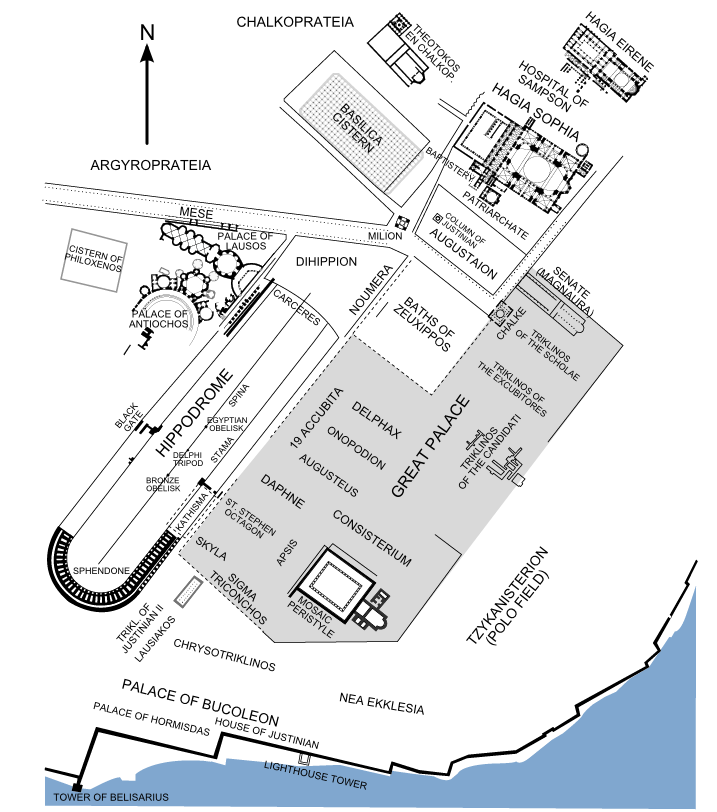Public baths in Region II (listed in the Notitia) supplied by the lower Hadrianic line alongside the Imperial Palace and its associated baths (Crow et al., 2008, p. 13). Based on excavations in the Hippodrome-area, the altitude of the baths is 5 m below today's level, c. 30 m above sea level in the Byzantine era (Crow et al., 2008, p. 110).
The baths were the greatest and most beautifully decorated in Constantinople, housing beautiful lifelike statues from different ages, which were celebrated in panegyrics and ekphrases by authors such as Christodoros (who catalogued over 80 statues). It also had an epigram addressed to empress Sophia (wife of Justin II) at the entrance: "Αὐσονίων δέσποιναν Ἱουλιανὸς πολιοῦχος ὡς σοφίης μεστὴν ἄνθετο τὴν Σοφίην" (Julian, the city prefect, has erected Sophia full of wisdom). The inscription alludes to a statue of the empress erected by this Julian (Janin, 1964, p. 222-223).
The bath was surrounded by houses and shops that all contributed to the upkeep of the building. An imperial edict from Theodosius II (r. 402-450) to the city prefect ordained that all revenue from the houses built adjacent to the baths should go to the baths' upkeep (Codex Theodosianus 15.1.52, given 9 January 424; see Appendix I in Crow et al., 2008, p. 229). The baths were destroyed by fire in the Nika riot of 532, and repaired by Justinian.
Information after these events is scarce. Later, parts of the bath and around were also used for an imperial silk factory and prison (Janin, 1964, p. 223; Müller-Wiener, 1977, p. 52, original source?). Constantine VII's Book of Ceremonies (10th century) says it was separated from the Chalke by the Achilles Passage. Nikephoros Callistus (14th century) claims the bath was later called 'Noumera'. By the time of Petrus Gyllius (Gilles) (16th century), nothing was left of the Baths of Zeuxippos anymore.

